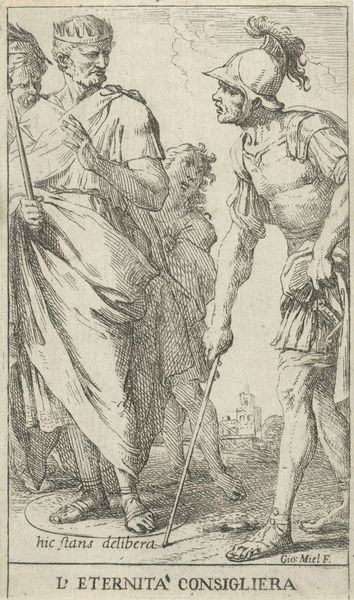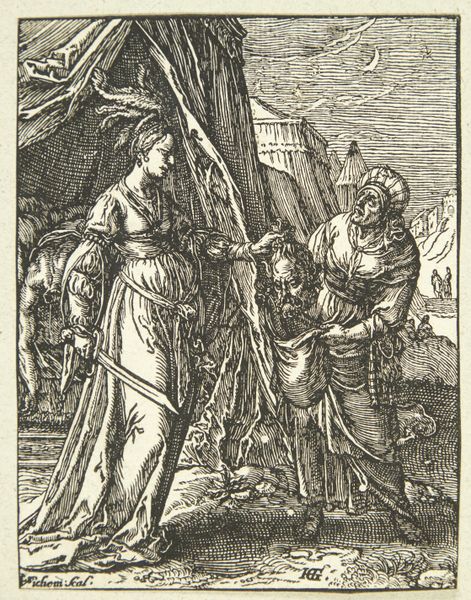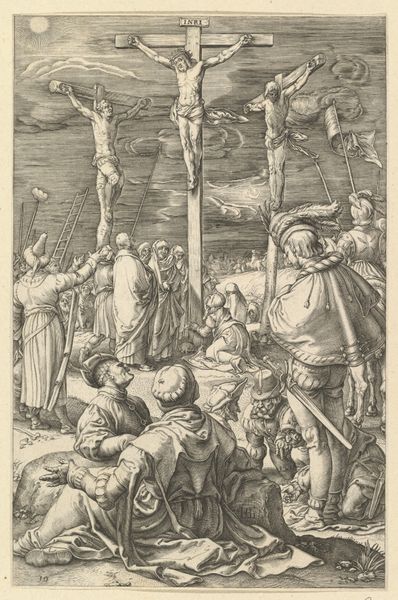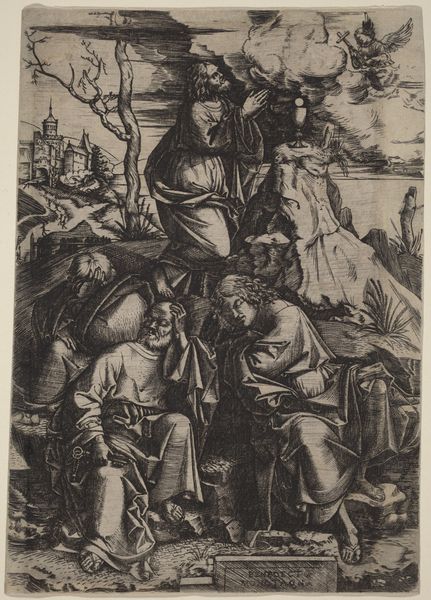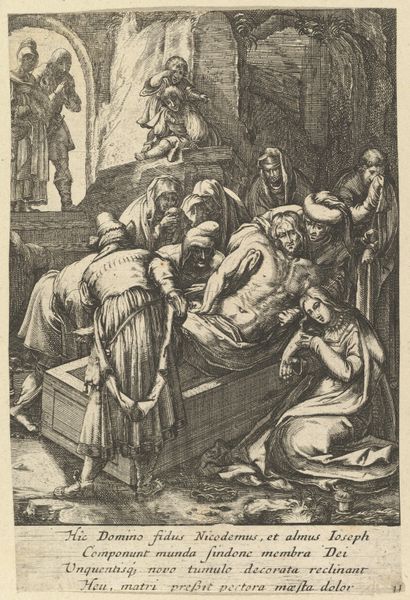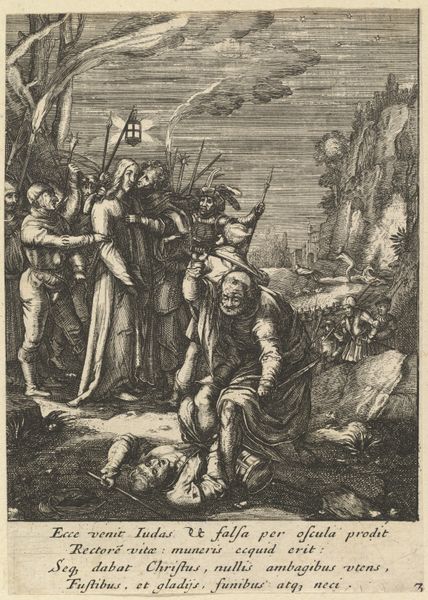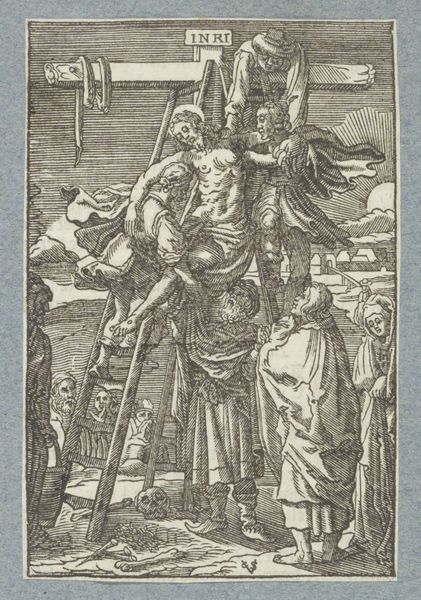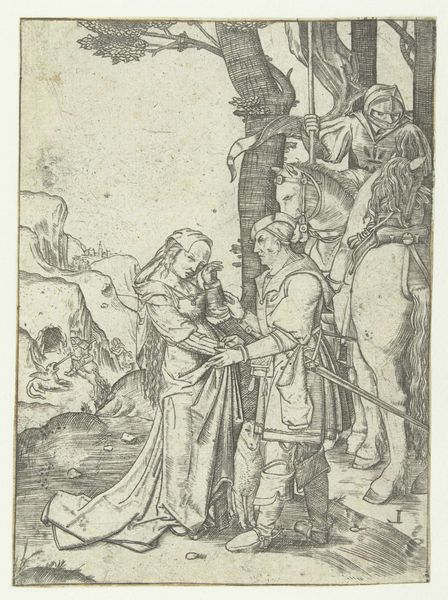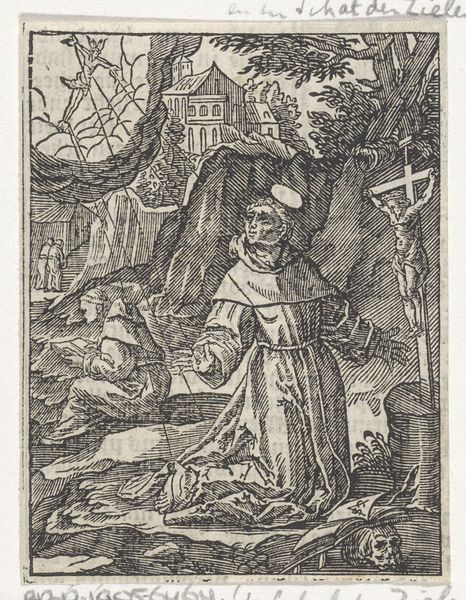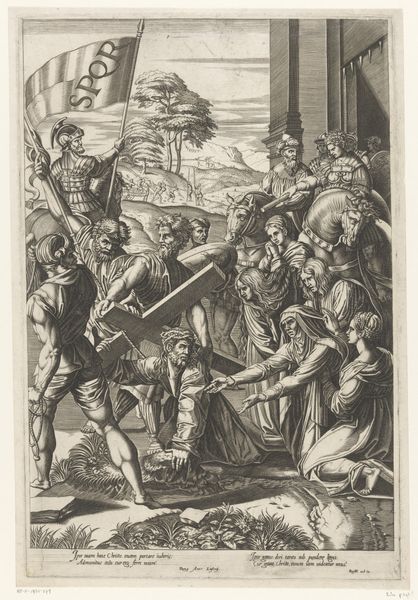
print, engraving
portrait
narrative-art
baroque
pen drawing
pen illustration
pen sketch
figuration
line
history-painting
italian-renaissance
engraving
Dimensions: height 136 mm, width 105 mm
Copyright: Rijks Museum: Open Domain
Curator: Here we have an engraving, likely from the period of 1600 to 1610, known as "Judith with the Head of Holofernes." The artist is, alas, unknown to us. Editor: It's rather stark, isn't it? All done in these very fine, precise lines. It creates a striking contrast, this sense of delicate execution portraying such a brutal subject. Curator: The story of Judith was very popular in art of this period, as it allowed the portrayal of a strong woman standing up for her people against tyranny. You see, Holofernes was an Assyrian general who threatened Judith’s city. She infiltrated his camp, seduced him, and then, while he was drunk, she decapitated him. Editor: The composition emphasizes Judith's composure against the horror of her actions. Note the tight control of the lines, the way the light seems to illuminate her face, making her a beacon in this dark narrative. The artist carefully directs our eye. Curator: The popularity of this particular biblical scene speaks to the sociopolitical climate of the time, the Counter-Reformation and the need to depict powerful figures, especially women, who defied oppression. This print would have circulated widely, spreading its message and moral far beyond any single location. Editor: Though rendered in monochrome, there's a vivid sense of depth through the hatching and cross-hatching. Even the backdrop is painstakingly detailed; the tent, the night sky. It’s almost unsettling how meticulous it is, given the gruesomeness. Curator: What strikes me most is how this image reinforces societal values, framing Judith as a heroine despite the violent act she committed. This image, reproduced and disseminated, shaped public opinion. Editor: Looking at the rendering of fabrics, and how the light catches the sword, it demonstrates the artist’s profound grasp of form and texture with a mere engraving tool. Curator: Ultimately, this image serves not just as a historical record, but as a commentary on power, resistance, and the complex role of women in society. Editor: A fascinating contrast—a macabre event depicted with grace and technical virtuosity.
Comments
No comments
Be the first to comment and join the conversation on the ultimate creative platform.
